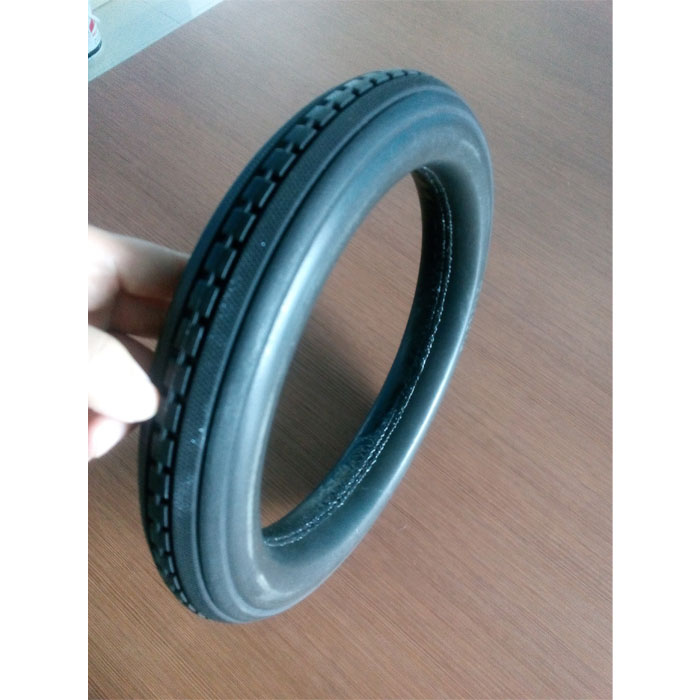Polyurethane elastomers are used in solid state, and their mechanical properties under various external forces are the most important indicators of their performance. In general, polyurethane elastomers are the same as other polymers, and their properties are related to molecular weight, intermolecular forces, segment toughness, crystallization tendency, branching and crosslinking, as well as the position, polarity and size of substituents. However, polyurethane elastomers are different from hydrocarbon-based (PP, PE, etc.) polymers in that their molecular structure is composed of soft segments (oligomer polyols) and hard segments (polyisocyanates, chain-extended cross-links, etc.). The electrostatic force between the macromolecules, especially between the hard segments, is very strong, and a large number of hydrogen bonds are often formed. This strong electrostatic force does not directly affect the In addition to the mechanical properties, it can also promote the aggregation of hard segments, produce microphase separation, and improve the mechanical properties and high and low temperature properties of elastomers.
The mechanical properties of the polyurethane elastomer depend on the crystallization tendency of the polyurethane elastomer, especially the crystallization tendency of the soft segment. However, the polyurethane elastomer is used in a high elastic state, and crystallization is not expected. Therefore, it is necessary to pass the formula and The process design finds a balance between elasticity and strength, so that the prepared polyurethane elastomer does not crystallize at the use temperature, has good elasticity, and can crystallize rapidly when it is highly stretched, and the melting temperature of this crystallization is around room temperature , when the external force is removed, the crystal melts rapidly, and this reversible crystal structure is very beneficial to improve the mechanical strength of the polyurethane elastomer.
Whether the polyurethane elastomer can have reversible crystallization mainly depends on the polarity, molecular weight, intermolecular force and regularity of the structure of the soft segment. The molecular polarity and intermolecular force of polyester is greater than that of polyether, so the mechanical strength of polyester polyurethane elastomer is greater than that of polyether polyurethane elastomer; the side groups in the soft segment will reduce the crystallinity, which will reduce the product's performance. mechanical properties.
The structure of the polyurethane hard segment also has a direct and indirect influence on the mechanical properties of the polyurethane elastomer. Generally, aromatic diisocyanates [such as diphenylmethane diisocyanate (MDI), toluene diisocyanate (TDI)] are larger than those of aliphatic diisocyanates. Isocyanates [such as hexamethylene diisocyanate (HDI)]; diisocyanates with symmetrical structures (such as MDI) can impart higher hardness, tensile strength and tear strength to polyurethane elastomers; The effect of physical and mechanical properties is similar to that of diisocyanates.
The relationship between heat resistance and structure
The thermal stability of polymers can be measured by softening temperature and thermal decomposition temperature. In general, the thermal decomposition temperature of polyurethane elastomers is lower than the softening temperature. Generally speaking, polyester polyurethane elastomers have better heat resistance than polyether polyurethane elastomers; for aromatic diisocyanates, the heat resistance order is: p-phenylene diisocyanate (PPDI)>1,5-naphthalene diisocyanate Isocyanate (NDI)>MDI>TDI.
The relationship between low temperature performance and structure
The low temperature elasticity of polymers is usually measured by the glass transition temperature and the cold resistance coefficient (or embrittlement temperature). In general, the low temperature flexibility of polyether polyurethane elastomer is better than that of polyester.
The relationship between water resistance and structure
The effect of water on polyurethane elastomers: water plasticization (water absorption) and water degradation. When the relative humidity is 100%: the water absorption rate of polyester polyurethane elastomer is about 1.1%, and the performance decline is about 10%; the water absorption rate of polyether polyurethane elastomer is about 1.4%, and the performance decline is about 20%; However, the hydrolytic stability of polyether polyurethane elastomers is greater than that of polyester polyurethane elastomers.
Oil and chemical resistance as a function of structure
Polyurethane elastomers have good resistance to grease and non-polar solvents. Generally, polyester polyurethane elastomers have better performance in oil resistance than polyether polyurethane elastomers; the higher the hardness of the polyurethane elastomer, the better the oil resistance; the chemical resistance of polycaprolactone polyurethane elastomers (such as sulfuric acid, nitric acid, etc.) performance is better than other types of polyurethane.


